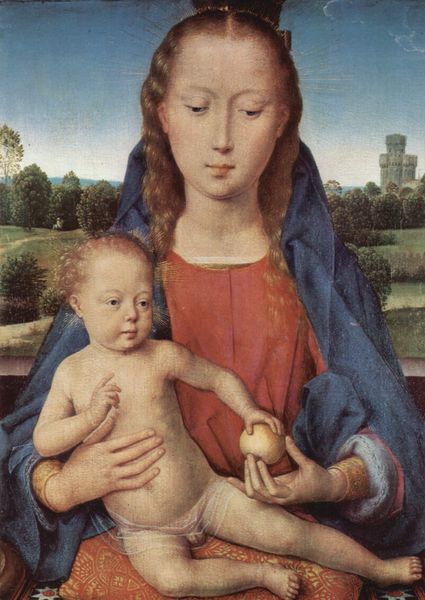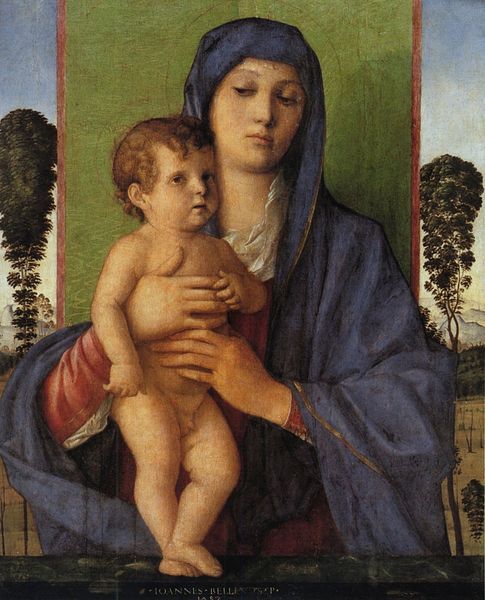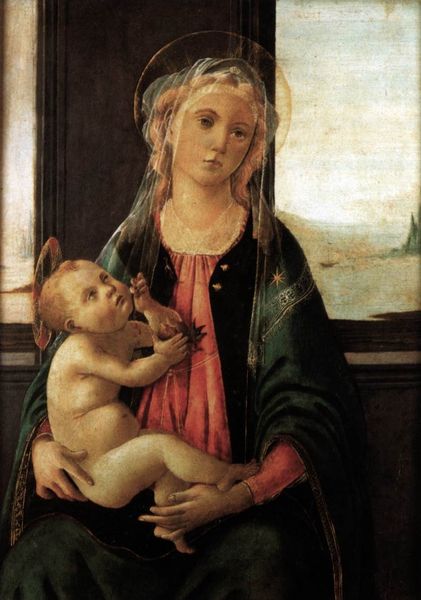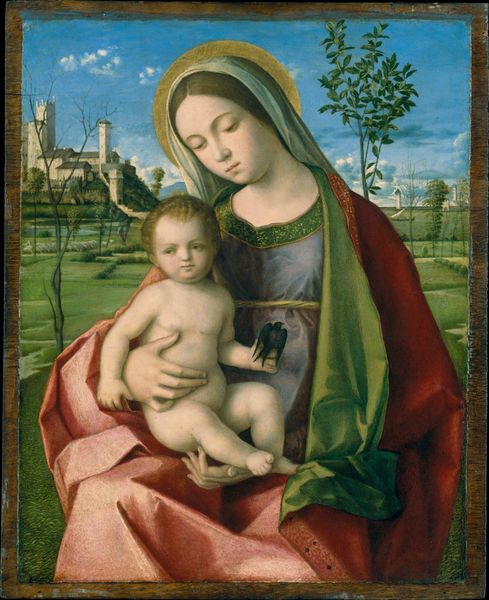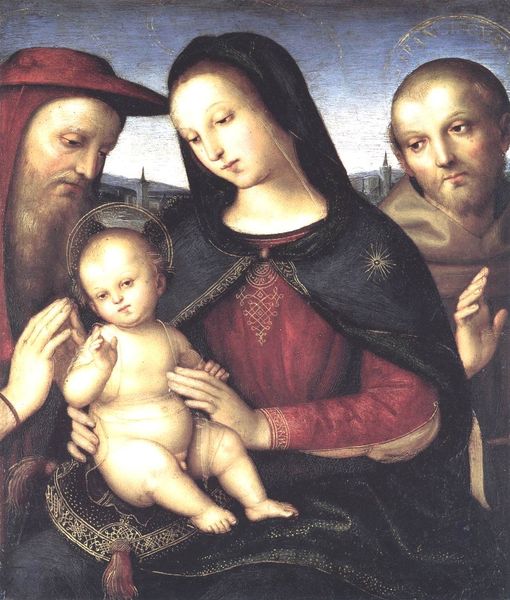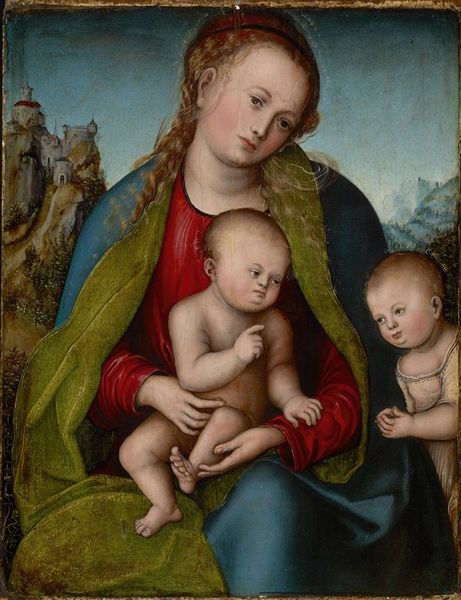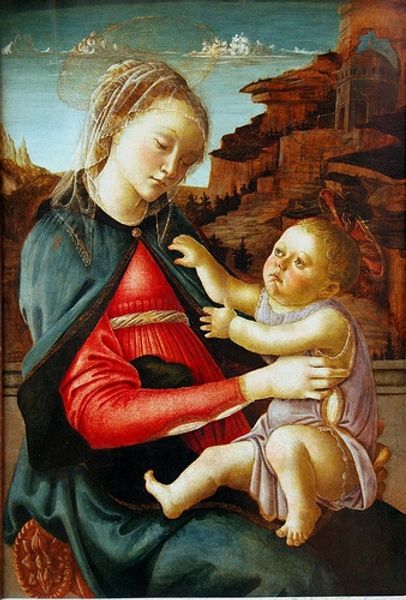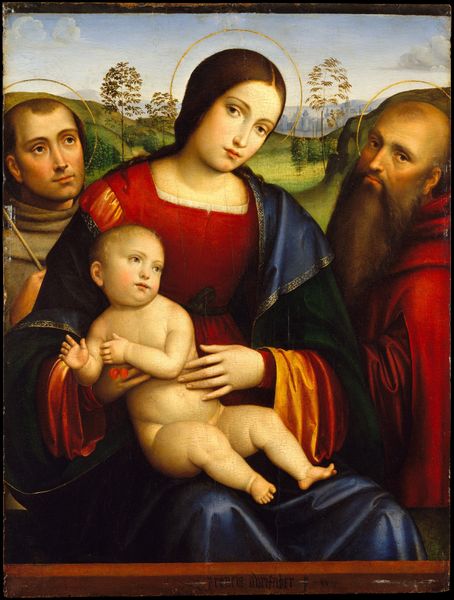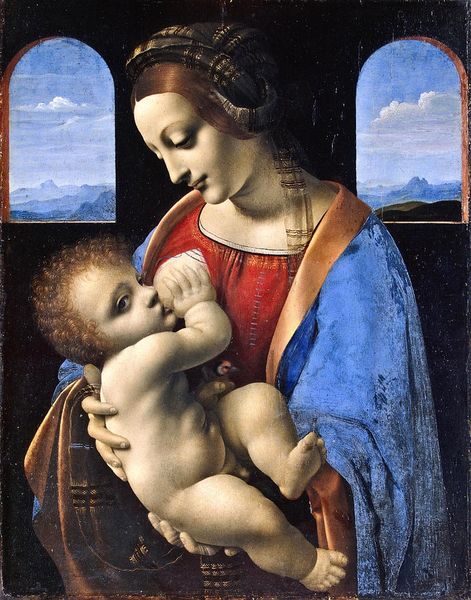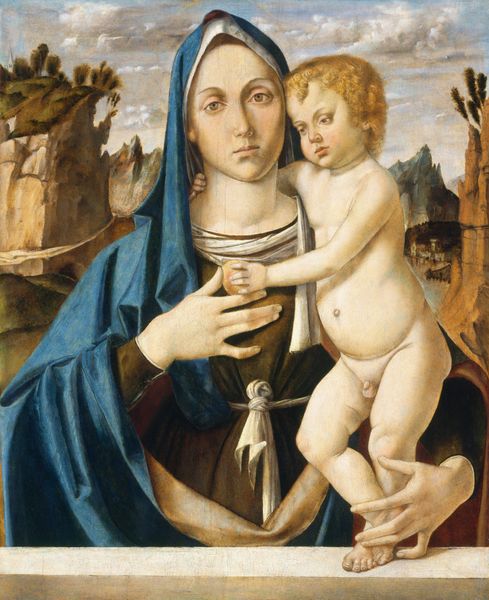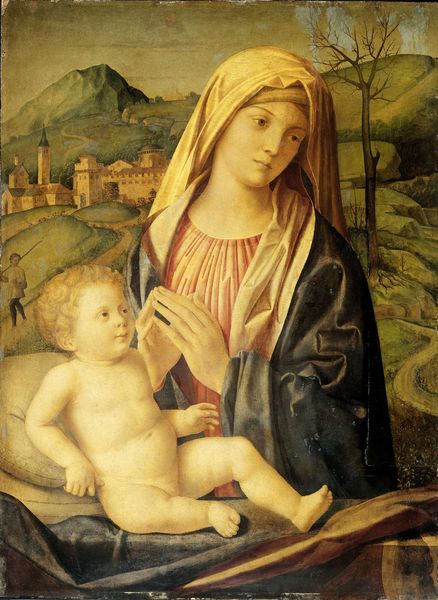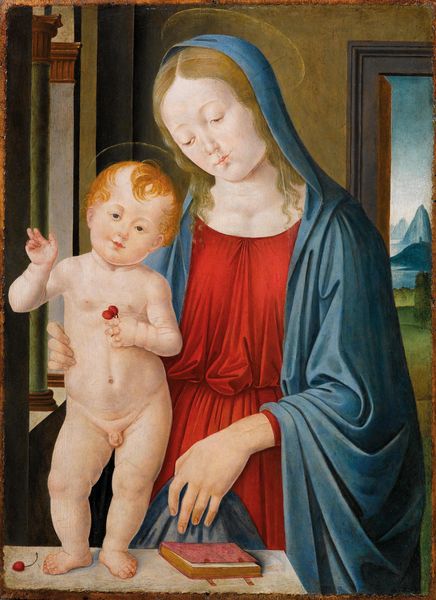
oil-paint
#
portrait
#
oil-paint
#
figuration
#
oil painting
#
group-portraits
#
history-painting
#
italian-renaissance
#
portrait art
Dimensions: height 50 cm, width 40 cm, depth 10 cm
Copyright: Rijks Museum: Open Domain
Curator: We’re looking at “The Holy Family,” an oil painting from around 1490-1510, by Lorenzo Costa. It’s part of the Rijksmuseum collection. Editor: My initial response is drawn to the colors and tones. They seem muted yet striking in the subdued atmosphere they evoke, it feels solemn, and domestic. What a composition! Curator: Indeed, and consider how the figures are constructed within specific historical and ideological frameworks. We can dissect the representation of Mary, Joseph, and the Christ Child not simply as a familial scene but as a political assertion, reinforcing power dynamics through the idealized image of family. This piece is also part of the larger Italian Renaissance narrative and how these gender roles influenced Western ideas. Editor: And speaking of construction, I am intrigued by the layers of materiality evident in the painting. From the rough weave of the canvas visible in certain spots to the careful glazing of Mary's robe, we get a tangible sense of Costa’s process, how he worked with the oil paint to build depth. The details within such familiar depictions—that is where my eyes linger, pondering how materials of faith intersected with commercial interests and even labor. Curator: Absolutely, it's vital to understand that art production then wasn't isolated from broader socioeconomic trends. By scrutinizing Costa’s aesthetic choices – his rendering of textures and color palettes– we can infer certain cultural anxieties and desires regarding family, sanctity, and virtue that circulated during this era. Look at how Joseph seems almost a marginal character – doesn’t that challenge traditional patriarchal narratives, ever so subtly? Editor: I see it too – and the positioning creates a perfect framework. This wasn't mass produced: “The Holy Family" speaks to the relationship between patron, workshop, artist, and the commodity they were crafting together using ground pigments. Think of the socio-economics in producing a painting of this scale, for this level of devotion. We see an intimate representation and yet recognize there were complex business decisions embedded in these brushstrokes. Curator: What’s powerful, too, is contemplating how viewers throughout history might’ve engaged with this imagery. Considering contemporary theory opens avenues to discussing how a piece like this reinforces certain perceptions or even challenges preconceived notions regarding gender, faith, and representation itself. How could an image such as this impact marginalized identities or those excluded by rigid definitions of faith or family? Editor: It makes me reconsider the role of the artist, as someone with the agency to not only produce fine works of art but actively participate in a system of labor – creating religious and societal affirmations. Lorenzo Costa did more than just produce an artistic experience; there is inherent and implicit economic power, too. Curator: Considering these varying aspects, perhaps it encourages more comprehensive engagement, so one isn’t just admiring aesthetics, but becoming mindful of ideological messages embedded. Editor: Right—let’s acknowledge the intersection between Costa’s skills and the system in which this work comes into existence!
Comments
No comments
Be the first to comment and join the conversation on the ultimate creative platform.
